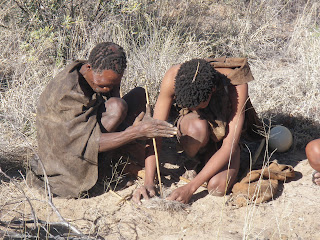But once in Kenya I managed to borrow a camera from my Couch Surfing host, and also from the hotel manager in Cairo and now - finally - we have stayed put long enough to have my camera repaired. So this blog entry is a little out of order, but hopefully I can go back in time and fill in the missing countries soon.
So - Kenya....
Despite these recent troubles I have maintained my resolve to sample all the world's beers. Here's a picture of me hard at work testing the quality of Kenya's famous "Tusker" beer.

In addition to all that "quality control" work we went with our Couch Surfing host to Nairobi's giraffe sanctuary.

It was a small, but high quality facility, the hi lite of which is to hand feed the giraffes...

... or, to, um, "lip feed" them? Anyway, the giraffes like to kiss everyone (as long as you're holding a delicious food pellet in your lips)...

This pic helps put things in perspective. This is the length of a giraffe's ulna compared to mine.

We then jumped onto a "matatu" (which is a minivan stripped bare, stuffed with seating for 14 but often travels with up to 20, garishly painted, pimped out with the loudest stereo, and turned into owner-operated "public" transit) ...

and went to the animal orphanage. They had lots of animals there, but the cats stole the show...

Going home I saw a pretty boastful sign. Who wouldn't want to call Dr. Kalifuu?

With some spare time we went to the markets. There are some great souvenirs to pick up if you're interested. Music, clothing, paintings, but my favorite were the wood carvings - especially the big ones. We actually bought a huge (50 lb) rhino. while in Zambia, but similar wares were available here in Nairobi. The skill and level of detail in some of these carvings was incredible.

On the weekend we went with our Couch Surfing host to visit her mother who lives on a farm about an hour away. We got some real insights to the rural life in Kenya (and a delicious home cooked dinner).

It seems a hard life with few luxuries. Here's some older women from the community who daily haul water and fire wood to their homes.

But the farm is not the only place without running water. At our host's flat there were water taps, but more often than not nothing comes out. So the majority of time you need to have your water delivered into your waiting buckets. And it was very affordable. 100 litres cost just $2.

But that's not all we had to do without. There was no can opener at the flat, so I was taught how to (safely) open a tin can with a kitchen knife - and it really works. That's me in action!























